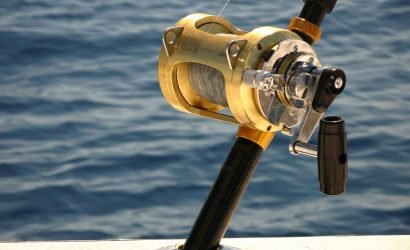The public’s long fascination with great white sharks has reached a crescendo in recent weeks with the appearance of a massive 16-footer cruising along the coast including a pass by Assateague and Ocean City last weekend.
OCEARCH Shark Trackers, a group of scientists dedicated to tagging and tracking sharks and researching their often misunderstood migration patterns, has been tracking the suddenly famous “Mary Lee,” an estimated 3,500 pounder.
“Mary Lee” was tagged Sept. 17, 2012, off the coast of Cape Cod and fitted with a transmitter that allows the OCEARCH team to track her migrations. The transmitter emits occasional pings, which are then charted on the group’s website to show the remarkable migration patterns. OCEARCH scientist Chris Fischer said he named “Mary Lee” after his mother, who, along with his father, has been so supportive of his research.
“My parents have done so much,” he said. “I was waiting for a special shark to name after her and this one is truly the most historic and legendary fish I have been a part of.”
After being tagged in September off the coast of Cape Cod, “Mary Lee” traveled south along the east coast throughout much of the late fall and early winter before starting to circle back in January.
After several pings tracked her location to the North Carolina coast and the Outer Banks earlier in January, the great white was tracked in the mid-Atlantic region a week or so ago. For example, on Jan. 25, “Mary Lee” was pinged at several times and at different locations around the mouth of the Chesapeake Bay.
Last Saturday, Jan. 26, “Mary Lee” was recorded several times at different locations off the coast of Chincoteague and later Assateague. Later on the same day, pings from “Mary Lee” were detected off the coast of Ocean City, and on Sunday, Jan. 27, the great white emitted pings from different locations and at different times from off the coast of Delaware.
By Tuesday, “Mary Lee” was tracked off the coast of Long Island, where she apparently remained through mid-week. By Wednesday afternoon, the latest ping emitted by “Mary Lee” was recorded well off the coast of Long Island and the dots on the chart seem to indicate the great white could be heading south again.
Tens of thousands of shark enthusiasts have been tracking the whereabouts of “Mary Lee” on the OCEARCH global tracking central at sharks-ocearch.verite.com, and the OCEARCH Facebook page. Meanwhile, OSEARCH is also currently tracking another great white shark named “Genie,” which was also tagged off Cape Cod last September. Thus far, “Genie” has been lurking around the warm waters off the south Atlantic coast. The last ping recorded from “Genie” came on Jan. 12 and placed her off the southeast coast of Savannah, Ga. The OCEARCH team is currently keeping tabs on around 36 sharks worldwide with its sophisticated tracking system.
According to OCEARCH, conserving sharks is a global priority and devising successful conservation and management strategies is largely limited by scientific knowledge on their biology and life history. Significant information is lacking with regard to the medium- and long-range movement patterns of white sharks. Traditional research has focused on fine small scale movements of white sharks within known aggregation sites. Gaining this previously unattainable information enables more effective shark and ocean conservation.
.jpg)
Source: MD Coast Dispatch








